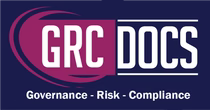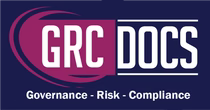SOC2 Risk Management Policy Template Download
Introduction
Risk management is essential for safeguarding an organization’s assets, ensuring compliance, and supporting strategic objectives. The Risk Management Policy provides a structured framework for identifying, assessing, treating, and monitoring risks, ensuring that the right information is available to the right people at the right time. It aligns with Australian and New Zealand laws, as well as recognized international standards, ensuring that risks are systematically managed throughout their lifecycle.

Step-By-Step Guide For Using The Risk Management Policy
Step 1: Define Scope and Applicability
-
-
Apply the policy to staff, contractors, consultants, visitors, and third parties interacting with organizational systems and information.
-
Ensure all information assets, records, and resources are included.
-
-
Why it matters: Clear applicability ensures consistent adoption across the enterprise.
Step 2: Assign Roles and Responsibilities
-
-
Management: Oversee implementation, allocate resources, and maintain compliance.
-
IT Department: Maintain systems, enforce security protocols, and train staff.
-
Employees: Follow secure practices, maintain confidentiality, and report risks.
-
-
Why it matters: Defined roles ensure accountability and coordinated action.
Step 3: Establish a Risk Management Program
-
-
Develop a structured program for risk identification, assessment, treatment, and monitoring.
-
Maintain a risk register for recording and managing identified risks.
-
-
Why it matters: A formalized program ensures consistent, repeatable risk practices.
Step 4: Identify Risks
-
-
Identify threats and vulnerabilities that may affect business objectives.
-
Assess risks associated with systems, data, people, and processes.
-
Assign ownership for risk governance and documentation.
-
-
Why it matters: Early identification of risks supports proactive mitigation.
Step 5: Conduct Risk Assessments
-
-
Conduct an annual formal risk assessment, plus quarterly reviews.
-
Evaluate risks based on likelihood and impact.
-
Review and update controls, policies, and procedures as risks evolve.
-
Prioritize risks by severity using risk scores.
-
-
Why it matters: Regular assessments provide a structured way to anticipate and prepare for threats.
Step 6: Apply Risk Treatment
-
-
Deploy controls to reduce risks to acceptable levels, aligned with organizational risk appetite.
-
Decide whether risks should be avoided, mitigated, transferred, or accepted.
-
Maintain effective controls and update them as needed.
-
-
Why it matters: Treatment ensures risks are managed practically and sustainably.
Step 7: Monitor Risks Continuously
-
-
Implement continuous monitoring processes and practices.
-
Collect, capture, and review risk information in the right context.
-
Use monitoring outcomes to reduce overall risk ratings and inform decision-making.
-
-
Why it matters: Ongoing monitoring ensures emerging risks are caught early.

Step 8: Review Risk Management Activities
-
-
Conduct bi-annual reviews of risk management activities.
-
Identify new vulnerabilities and update mitigation strategies accordingly.
-
Incorporate lessons learned from incidents and assessments.
-
-
Why it matters: Regular reviews strengthen resilience and improve preparedness.
Step 9: Implement Security Measures
-
-
Deploy firewalls, intrusion detection systems, and perform regular security audits.
-
Apply physical security measures to protect hardware and sensitive assets.
-
Align with ACSC and NCSC recommendations for robust defenses.
-
-
Why it matters: Security measures reduce exposure to cyber threats and safeguard assets.
Step 10: Enforce Access Control
-
-
Apply the principle of least privilege for access to sensitive systems and data.
-
Maintain audit trails for all system access.
-
Review and adjust permissions regularly.
-
-
Why it matters: Access control minimizes unauthorized use and ensures traceability.
Step 11: Ensure Regulatory Compliance
-
-
Comply with the Australian Telecommunications (Interception and Access) Act and the New Zealand Telecommunications (Interception Capability and Security) Act.
-
Follow lawful data retention and interception mandates.
-
Train staff on compliance obligations.
-
-
Why it matters: Legal compliance safeguards the organization from penalties and maintains trust.
Step 12: Training, Awareness, and Policy Review
-
-
Provide ongoing training to employees on risk management practices and compliance.
-
Conduct awareness campaigns to reinforce secure behavior.
-
Review the policy annually or after significant business or regulatory changes.
-
Approve and document exceptions at senior management level.
-
-
Why it matters: Training and reviews ensure policies remain effective and employees stay informed.
Conclusion
The Risk Management Policy offers a comprehensive approach to identifying, analyzing, treating, and monitoring risks across the organization. By following these twelve steps—covering risk identification, assessment, treatment, monitoring, security measures, compliance, and awareness—organizations can reduce vulnerabilities and improve decision-making. Regular reviews and training keep the process dynamic, while strong access controls and security measures reinforce protection.





